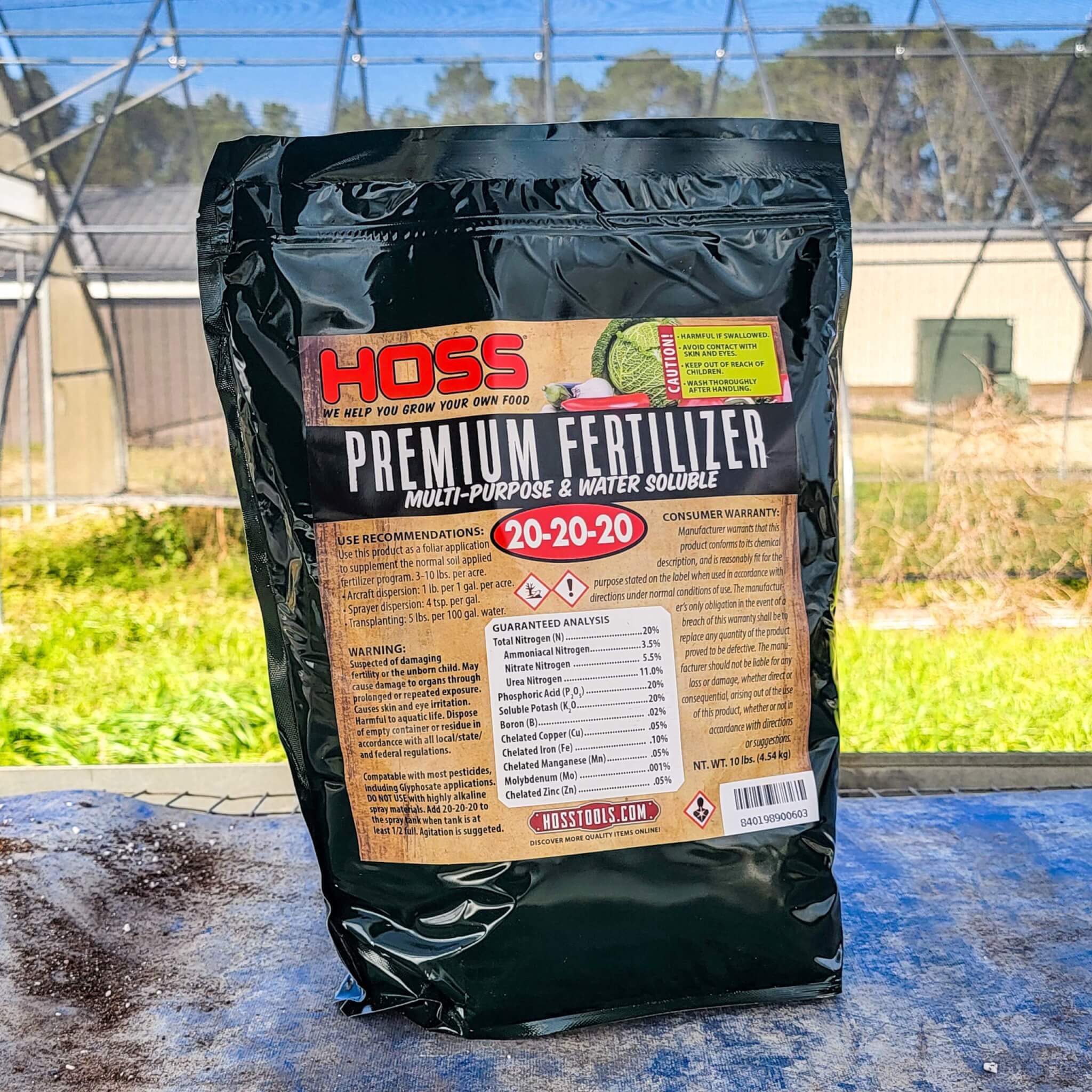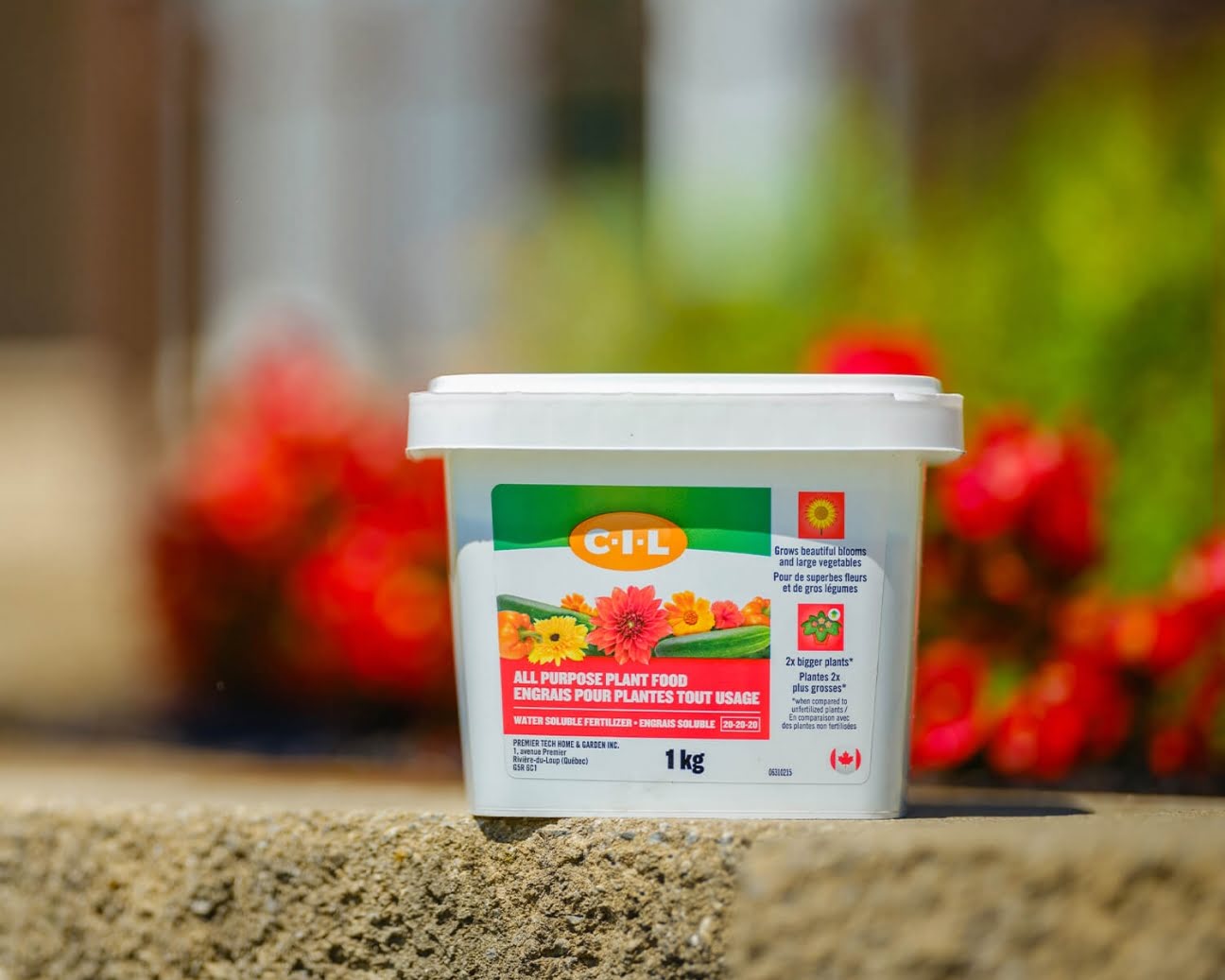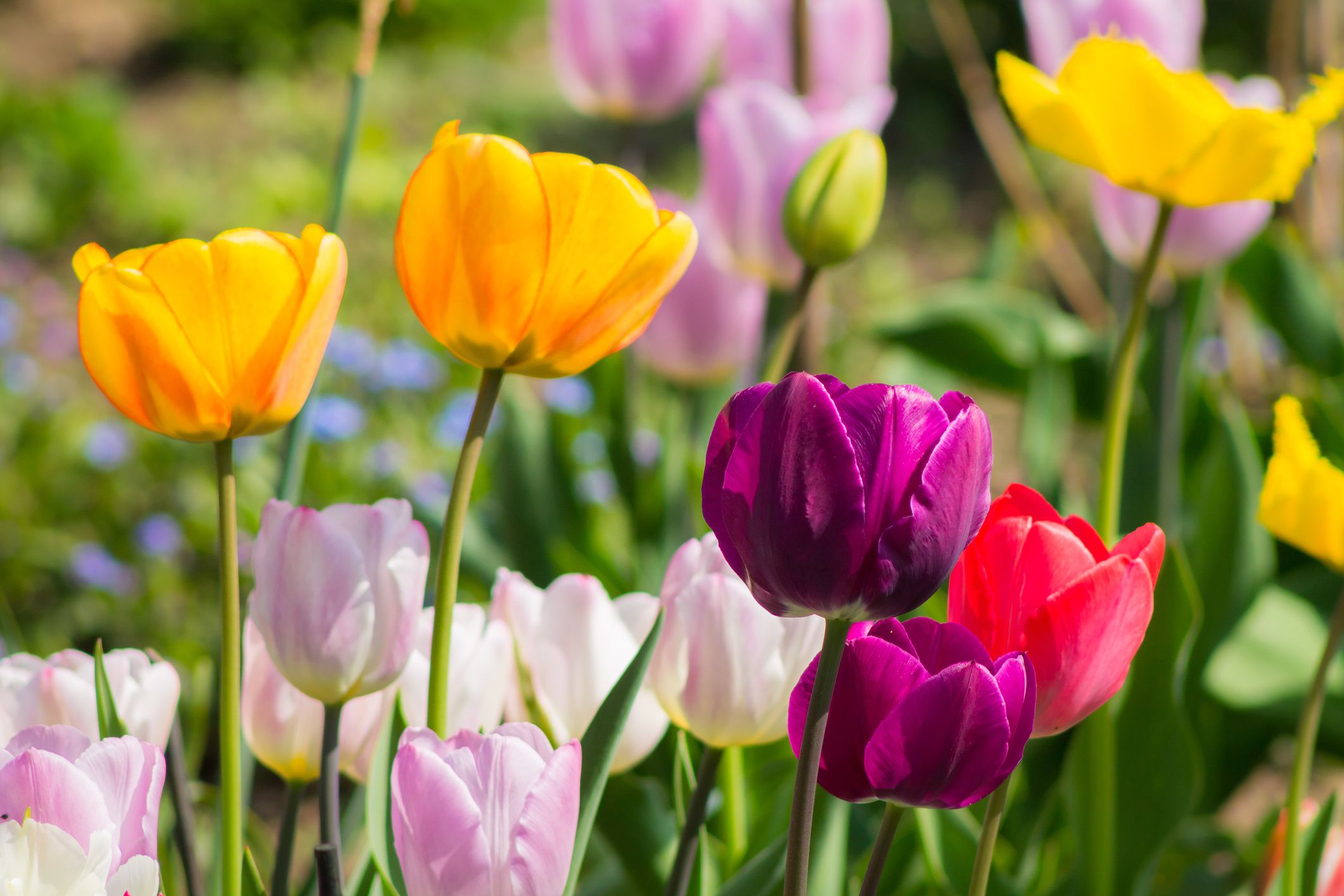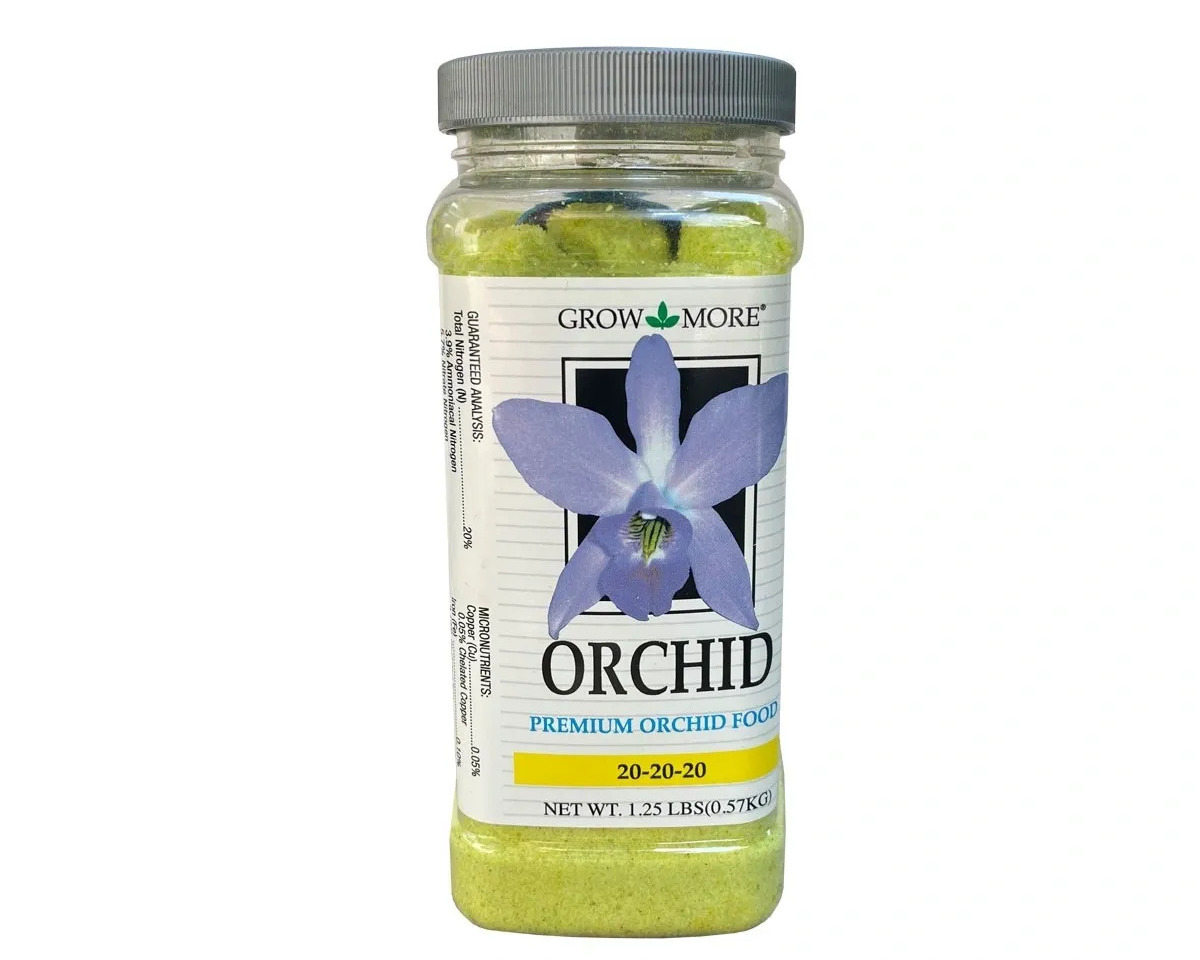Home>Gardening Basics>What Does 20 20 20 Fertilizer Mean?


Gardening Basics
What Does 20 20 20 Fertilizer Mean?
Modified: January 22, 2024
Discover what the term "20-20-20 fertilizer" means and how to get started using it. Improve your gardening with this balanced nutrient solution.
(Many of the links in this article redirect to a specific reviewed product. Your purchase of these products through affiliate links helps to generate commission for Chicagolandgardening.com, at no extra cost. Learn more)
Table of Contents
Introduction
Welcome to the world of gardening and fertilizers! If you’re new to the world of plant care, you’ve probably come across the term “20 20 20 fertilizer” and wondered what it means. Fertilizers play a crucial role in providing essential nutrients to plants, promoting healthy growth and vibrant blooms. The 20 20 20 fertilizer is a popular choice among gardeners for its balanced nutrient composition and ease of use.
In this article, we will explore what exactly 20 20 20 fertilizer means and how it can benefit your plants. We will delve into its composition, the nutrient ratios it contains, and the proper way to use it. Additionally, we will discuss any potential drawbacks of using 20 20 20 fertilizer and offer some alternative options for different gardening needs.
Whether you’re a seasoned gardener looking to optimize your plant care routine or a beginner hoping to learn more about fertilizers, this article will provide you with the information you need to make informed decisions regarding the use of 20 20 20 fertilizer.
Definition of 20 20 20 Fertilizer
20 20 20 fertilizer, also known as balanced fertilizer, is a type of fertilizer that contains equal parts of nitrogen (N), phosphorus (P), and potassium (K). These three nutrients are essential for plant growth and play different roles in supporting various aspects of a plant’s development.
Nitrogen, represented by the first “20,” is responsible for promoting leaf and stem growth. It is crucial for the production of chlorophyll, the pigment that enables plants to convert sunlight into energy through photosynthesis. Nitrogen is vital for lush, green foliage, and a deficiency can lead to stunted growth and yellowing leaves.
The second “20” represents phosphorus, which is key for strong root development, flower formation, and overall plant vigor. Phosphorus plays a critical role in energy transfer within plants and aids in the production of proteins, enzymes, and DNA. It facilitates nutrient absorption and enhances a plant’s ability to withstand stress and disease.
Last but not least, the third “20” stands for potassium, also known as potash. Potassium helps regulate water movement within the plant and improves its tolerance to drought and disease. It contributes to overall plant health and enhances flowering, fruiting, and seed production. Potassium also plays a role in activating enzymes and balancing pH levels in plants.
By providing equal amounts of these three crucial nutrients, 20 20 20 fertilizer ensures that plants receive a well-rounded and balanced nutritional boost. This balanced formulation makes it suitable for a wide range of plants, including vegetables, flowers, fruits, and ornamentals. It can be used in various growing environments, such as gardens, lawns, or potted plants.
Now that we understand the basic definition of 20 20 20 fertilizer, let’s explore its composition and nutrient ratios in more detail to gain a deeper understanding of how it benefits plants.
Composition and Nutrient Ratio
The composition of 20 20 20 fertilizer refers to the percentages of nitrogen (N), phosphorus (P), and potassium (K) it contains. As the name suggests, each of these nutrients accounts for 20% of the fertilizer’s total weight. This balanced nutrient ratio is expressed as 20-20-20.
The equal distribution of NPK in 20 20 20 fertilizer provides plants with a comprehensive nutritional profile. The balanced ratio ensures that plants receive the necessary nutrients for overall growth and development.
Nitrogen (N) is crucial for vegetative growth, promoting the development of leaves, stems, and branches. It stimulates foliage growth and ensures that plants have a healthy green color. It is also responsible for protein synthesis and aids in the production of enzymes and other essential compounds.
Phosphorus (P) plays a vital role in root development and flowering. It improves the maturity and quality of fruits and seeds. Phosphorus is also involved in energy transfer and storage, helping plants convert sunlight into usable energy through photosynthesis. It plays a key role in DNA synthesis, promoting overall plant vigor and health.
Potassium (K), also known as potash, is essential for various physiological processes within plants. It regulates water movement, maintains turgor pressure, and improves the plant’s ability to withstand drought and disease. Potassium promotes the activation of enzymes, enhancing photosynthesis and nutrient absorption. It supports the development of flowers, fruits, and seeds, ultimately contributing to higher yields.
It’s important to note that while 20 20 20 fertilizer provides a balanced mixture of nutrients, it may not be suitable for all plants or situations. Some plants have specific nutritional requirements that may differ from the equal ratio offered by this fertilizer. It’s advisable to conduct a soil test and consult specific guidelines for individual plants to ensure they receive the appropriate nutrients.
Now that we understand the composition and nutrient ratio of 20 20 20 fertilizer, let’s explore the benefits it offers for plant growth and how to properly use it to maximize its effectiveness.
Benefits of Using 20 20 20 Fertilizer
Using 20 20 20 fertilizer offers several benefits for plants and gardeners alike. Let’s explore some of the advantages of incorporating this balanced fertilizer into your plant care routine:
- Promotes balanced growth: The equal distribution of nutrients in 20 20 20 fertilizer ensures that plants receive a well-rounded boost of essential elements. This balanced nutrition promotes healthy growth in both foliage and roots, leading to overall stronger and more vigorous plants.
- Enhances flowering and fruiting: The phosphorus and potassium content in 20 20 20 fertilizer play a crucial role in flower and fruit formation. These nutrients stimulate flowering, improve flower quality, and enhance the development of larger, more abundant fruits. Using this fertilizer can result in more impressive blooms and increased crop yields.
- Improves nutrient uptake: Nitrogen in 20 20 20 fertilizer aids in nutrient absorption and assimilation within plants. It helps plants take up other essential elements, ensuring they have access to the necessary nutrients for optimal growth. This can lead to improved overall health and resilience against environmental stressors.
- Ease of use: The balanced ratio of nutrients in 20 20 20 fertilizer simplifies the fertilization process. Since all three essential elements are present in equal percentages, there’s no need for multiple fertilizers or complex mixing ratios. This makes it convenient for gardeners, especially beginners, to provide their plants with a well-balanced nutritional boost.
- Versatile application: 20 20 20 fertilizer is suitable for various plants and growing conditions. It can be used in gardens, lawns, and containers for a wide range of plant types, including vegetables, flowers, fruits, and ornamentals. Whether you’re growing plants indoors or outdoors, this fertilizer can effectively support their growth and development.
These benefits make 20 20 20 fertilizer a popular choice among gardeners who seek a versatile, all-purpose fertilizer that can provide essential nutrients for their plants. However, it’s important to understand the proper application and potential drawbacks of using this fertilizer, which we’ll discuss in the following sections.
How to Use 20 20 20 Fertilizer
Using 20 20 20 fertilizer effectively requires following the proper application methods. Here are some guidelines to help you make the most of this balanced fertilizer:
- Dilute properly: Before applying 20 20 20 fertilizer, it is important to dilute it according to the manufacturer’s instructions. Typically, this involves mixing a specific amount of fertilizer with water to create a solution that can be easily applied to plants. Follow the recommended dilution ratios to ensure proper nutrient uptake and prevent any potential harm to plants.
- Apply during the growing season: Apply 20 20 20 fertilizer during the active growth period of your plants. For most plants, this is generally during the spring and summer months. Avoid fertilizing dormant plants or during periods of extreme weather conditions, such as hot or cold temperatures.
- Water plants before fertilizing: It is advisable to water your plants thoroughly before applying fertilizer. This helps ensure that the nutrients are evenly distributed and absorbed by the root system. Avoid fertilizing plants with dry soil, as it can potentially cause root burn or damage.
- Follow recommended feeding schedule: Refer to the fertilizer packaging or product instructions for proper feeding intervals. Typically, 20 20 20 fertilizer is applied every 2-3 weeks during the active growing season. However, specific plants may have different requirements, so it’s important to check guidelines for individual species.
- Avoid over-application: While it’s important to provide plants with adequate nutrients, over-fertilizing can be harmful. Too much fertilizer can lead to nutrient imbalances, burning of roots, and damage to the plants. Follow the recommended dosage and avoid applying fertilizer more frequently or at higher concentrations than advised.
- Monitor plant response: Pay attention to how your plants respond to the fertilizer. Observe their growth, appearance, and overall health. If you notice signs of nutrient deficiency or excess, adjust your fertilization practices accordingly. Over time, you will develop a better understanding of the specific needs of your plants and can fine-tune your fertilization routine.
By following these guidelines, you can ensure effective and responsible use of 20 20 20 fertilizer, providing your plants with the nutrients they need for optimal growth and development. However, it’s important to consider potential drawbacks associated with this fertilizer, which we will explore in the next section.
Potential Drawbacks of 20 20 20 Fertilizer
While 20 20 20 fertilizer offers numerous benefits, it’s important to be aware of its potential drawbacks as well. Here are some considerations when using this type of fertilizer:
- Imbalanced nutrient requirements: Different plants have varying nutritional needs. While 20 20 20 fertilizer provides a balanced ratio of nutrients, some plants may require specific nutrient ratios or higher amounts of certain elements. It’s important to consider the specific requirements of your plants and adjust your fertilization strategy accordingly.
- Over-fertilization and nutrient imbalances: Applying 20 20 20 fertilizer at higher concentrations or more frequently than recommended can lead to over-fertilization. This can result in nutrient imbalances and harm plants. Always follow the recommended dosage and feeding schedule to prevent damage to your plants.
- Environmental impact: Excessive or improper use of fertilizer can have negative environmental consequences. If fertilizer runoff reaches water bodies, it can contribute to water pollution and harm aquatic ecosystems. Ensure proper application and avoid using fertilizers near water sources to minimize this potential impact.
- Dependency on fertilizer: Ongoing use of 20 20 20 fertilizer may cause plants to become dependent on the continuous supply of nutrients. This can reduce their ability to source nutrients naturally from the soil and potentially weaken their resilience to stressors. It’s important to strike a balance and incorporate other organic practices to maintain healthy soil fertility.
- Lack of micronutrients: While 20 20 20 fertilizer provides the essential macronutrients nitrogen, phosphorus, and potassium, it may not contain adequate amounts of micronutrients. Micronutrients, such as iron, zinc, and manganese, are required in smaller quantities but are still essential for plant growth. Supplementing with micronutrient-rich amendments or using a broad-spectrum fertilizer can help address this issue.
Considering these potential drawbacks will help you make informed decisions and optimize the use of 20 20 20 fertilizer in your garden or landscape. It’s important to balance the benefits and drawbacks to ensure the overall health and wellbeing of your plants.
Alternatives to 20 20 20 Fertilizer
While 20 20 20 fertilizer is a versatile and widely used option, it’s not the only choice available. Depending on your specific needs and the requirements of your plants, there are alternative fertilizers you can consider. Here are a few options:
- Slow-release fertilizers: Slow-release fertilizers provide a steady supply of nutrients over an extended period. They release nutrients gradually, reducing the risk of over-fertilization and minimizing nutrient loss due to leaching. This type of fertilizer is especially beneficial for plants that have lower nutrient needs or for gardeners who prefer a more hands-off approach to fertilization.
- Organic fertilizers: Organic fertilizers are derived from natural sources such as compost, animal manure, or bone meal. They provide a wide range of nutrients in a slow-release form and also improve soil structure and fertility. Organic fertilizers are environmentally friendly and help build long-term soil health. However, they may require larger quantities and take longer to see results compared to synthetic fertilizers.
- Specialty fertilizers: Depending on your plant’s nutritional requirements, you may opt for specialty fertilizers that cater to specific needs. This could include fertilizers specially formulated for acid-loving plants, high-nitrogen fertilizers for leafy greens, or bloom boosters for flowering plants. These targeted formulas are designed to provide the specific nutrients that certain plants require for optimal growth and development.
- Liquid fertilizers: Liquid fertilizers are applied in liquid form, either by mixing them with water or using a foliar spray. They are quickly absorbed by plants, providing immediate nutrient uptake. Liquid fertilizers are a convenient option for container gardening or when plants require a quick nutrient boost. However, they may need more frequent applications compared to granular fertilizers.
- Compost and organic matter: Instead of relying solely on fertilizers, incorporating compost and organic matter into your soil can provide a rich source of nutrients and improve soil structure. Compost adds beneficial microbes, improves moisture retention, and promotes overall soil health. Regularly amending your soil with compost can help reduce the need for synthetic fertilizers.
These are just a few alternative options to consider when choosing fertilizers for your plants. It’s important to assess the specific needs of your plants, soil conditions, and your gardening practices before making a decision. Experimenting with different fertilizers and observing how your plants respond will help you determine the most suitable option for your gardening needs.
Conclusion
Understanding the role of fertilizers is essential for successful plant care, and 20 20 20 fertilizer offers several advantages for gardeners. Its balanced nutrient ratio of nitrogen, phosphorus, and potassium promotes overall plant growth, enhances flowering and fruiting, and improves nutrient uptake. The ease of use and versatility of 20 20 20 fertilizer make it a popular choice among gardeners of all levels of experience.
However, it’s important to consider the potential drawbacks of using this fertilizer, such as the imbalanced nutrient requirements of certain plants, the risk of over-fertilization, and the potential environmental impact. It’s crucial to follow proper application methods and dosage instructions to avoid harm to your plants and the surrounding ecosystem.
Exploring alternative fertilizers, such as slow-release or organic options, also provides flexibility and caters to specific plant needs. Complementing fertilization with organic matter, like compost, can further enhance soil health and reduce dependency on synthetic fertilizers.
As a gardener, it’s important to find the right balance between providing essential nutrients to your plants and practicing responsible fertilization. By considering the characteristics and requirements of your plants, you can choose the most suitable fertilization approach that promotes their optimal growth and overall health.
Remember, gardening is a continuous learning process, and adapting your fertilization practices based on your observations and the specific needs of your plants will help you achieve rewarding results in your garden.







